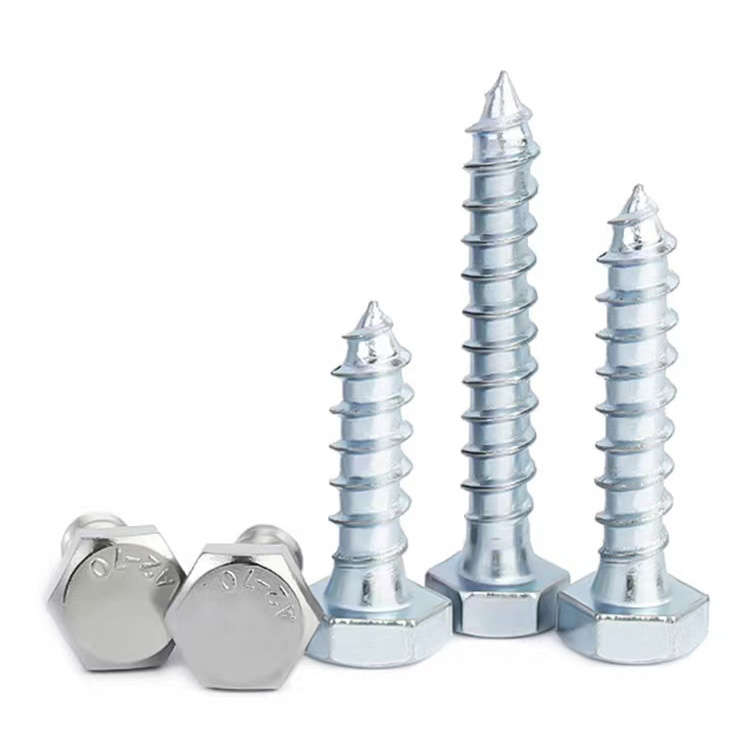What Makes Tapping Screws the Go-To Fastener for DIYers and Pros?
2025-11-24
Tapping screws are quick-installation steel fasteners with a galvanized passivated surface, primarily used for connecting thin metal sheets such as steel plates and saw blades. To connect them, a threaded guide hole is first drilled in the parts to be connected, and then the self-tapping screw is screwed into the guide hole. Let's explore why these unsung heroes dominate the global construction, automotive, and manufacturing industries.
Why Tapping Screws Outperform Traditional Fasteners
| Struggle | Regular Screws | Tapping Screws |
|---|---|---|
| Installation Time | 4+ steps: drill, tap, insert, drive | 1 step: drive & go |
| Material Damage | Splitting wood or cracking plastic | Clean threads cut & hold material tight |
| Vibration Resistance | Loosen over time | Locking threads resist shaking |
| Rework Options | Stripped holes require repair kit |
Re-drivable into same hole 4–6 times |
Breaking Down Tapping Screw Types
| Head Type | Best Used When... | Common Applications |
|---|---|---|
| Pan Head | Flush surface finish required | Electronics panels, visible fixtures |
| Hex Washer Head | Heavy-duty torque loading | Car chassis, machinery frames |
| Flat Head | Countersunk invisible fastening | Furniture, sign mounting |
Tapping screws break during installation:
1. Screw Hardness and Material Mismatch:
Problems will inevitably arise if the taping screw alloy doesn't match the base material. When screwing screws into wood or plastic, choose 410 stainless steel screws, as their optimal hardness allows them to hold the fibers firmly without cracking the brittle surface. However, for penetrating harder metals, such as steel structural frames or sheet metal machinery, high-strength 17-4 PH stainless steel screws are required. Their hardened components allow them to easily cut through thin sheets, like aluminum foil, while also resisting deformation.
2. Excessive Drill Speed:
Setting the drill to its highest speed leads to fatal heat buildup, a major cause of screw fatigue. Most materials perform best at 800-1500 rpm, generating sufficient torque to cut the threads without causing stress fracture.
How many times can tapping screw holes be reused?
1. Wood: Can be reused 6-8 times if the screw is gently unscrewed.
2. Thin metal sheets: Can be reused 2-3 times as metal threads will fatigue.
3. Plastic: Replace the hole after 3 unscrews as the threads will wear down.
Can galvanized screws be used with stainless steel surfaces?
No, galvanic corrosion will cause rapid rusting. For steel surfaces, steel or galvanized screws are recommended; for aluminum surfaces, A2 or A4 stainless steel screws are recommended; for outdoor or exposed metal, ceramic-coated screws are recommended.

Tapping Screw Installation Guide
Before proceeding to the next step, ensure the density and thickness of the substrate are determined. For metals less than 2 mm thick, choose blunt-tipped Type B self-tapping screws to prevent material deformation. Hardwoods, composites, and rigid plastics require pointed tapping screws to ensure clean threads. When joining layered materials, Type F flat-head screws provide optimal compressive force. Maintain a rotation speed between 800-1100 rpm and keep the axial pressure stable. Sudden resistance indicates possible mis-threading: immediately reverse the rotation by half a turn and re-engage. For dense substrates, the guide hole remains crucial. Confirm screw material compatibility before installation. Galvanized self-tapping screws will experience galvanic corrosion when in contact with stainless steel. In dissimilar metal connections, use ceramic-coated fasteners or matching alloys. Screw head discoloration or vapor emission indicates excessive friction. This may indicate incorrect rotation speed setting, a defective guide hole, or alloy incompatibility.





